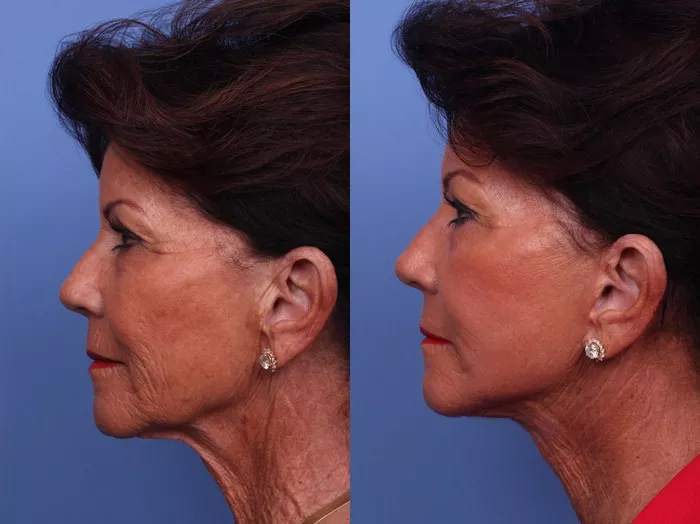Crepey skin is a common skin concern characterized by thinning, wrinkling, and a delicate, crinkled texture that resembles crepe paper. It commonly affects areas such as the arms, legs, neck, and décolletage. While crepey skin is often associated with aging, there are various factors that can contribute to its development. In this article, we will explore the causes of crepey skin and discuss ways to prevent and manage this condition.
Loss of Collagen and Elastin
One of the primary causes of crepey skin is the natural aging process. As we age, our skin gradually loses collagen and elastin, which are two essential proteins responsible for maintaining skin firmness, elasticity, and structure. The decline in these proteins leads to a breakdown of the skin’s support network, resulting in the characteristic thin and crepe-like appearance.
Sun Exposure and Photoaging
Excessive sun exposure is a major contributor to crepey skin. Prolonged exposure to ultraviolet (UV) radiation damages the skin’s collagen and elastin fibers, accelerating their breakdown and inhibiting their production. This process, known as photoaging, can lead to premature aging signs, including crepey skin. UV rays penetrate deep into the skin, causing cumulative damage over time, and the effects are particularly noticeable on areas that receive the most sun exposure, such as the face, neck, and arms.
Lack of Moisture and Hydration
Proper skin hydration is crucial for maintaining its elasticity and plumpness. When the skin lacks sufficient moisture, it becomes dehydrated and more prone to crepiness. Factors such as environmental conditions, harsh weather, excessive bathing or swimming, and the use of drying skincare products can contribute to moisture loss and exacerbate crepey skin.
Lifestyle Choices and Habits
Certain lifestyle choices and habits can accelerate the development of crepey skin. These include:
- Smoking: Smoking damages collagen and elastin fibers, leading to premature aging and the appearance of crepey skin. The toxins in cigarette smoke impair blood circulation, depriving the skin of vital nutrients and oxygen.
- Unhealthy Diet: A diet lacking in essential nutrients and antioxidants can contribute to skin aging and crepiness. Nutritional deficiencies can impair collagen production and overall skin health. A diet rich in fruits, vegetables, whole grains, and lean proteins can support skin health and minimize the risk of crepey skin.
- Weight Fluctuations: Rapid weight gain or loss can stretch the skin, causing it to lose elasticity and contributing to the development of crepiness. It is important to maintain a stable and healthy weight to minimize the risk of crepey skin.
- Lack of Exercise: Regular exercise promotes healthy blood circulation, oxygenation, and delivery of nutrients to the skin. A sedentary lifestyle can lead to poor skin health and accelerate the appearance of crepey skin.
Genetics and Hormonal Changes
Genetics play a role in determining an individual’s susceptibility to crepey skin. Some individuals may have a genetic predisposition to reduced collagen and elastin production, making them more prone to developing crepiness at an earlier age.
Hormonal changes also influence skin health. As women enter menopause, a decline in estrogen levels occurs. Estrogen helps maintain skin hydration, elasticity, and thickness. The decrease in estrogen during menopause can contribute to the development of crepey skin.
Prevention and Treatment
While crepey skin is a natural part of the aging process, there are steps you can take to prevent its onset or minimize its appearance:
- Protect Your Skin from the Sun: Shield your skin from harmful UV rays by wearing sunscreen with a high SPF, seeking shade during peak sun hours, and wearing protective clothing such as hats and long sleeves.
- Stay Hydrated: Drink plenty of water and use moisturizers that contain ingredients like hyaluronic acid, glycerin, or ceramides to help maintain skin hydration.
- Adopt a Healthy Lifestyle: Quit smoking, maintain a nutritious diet rich in antioxidants, exercise regularly, and manage stress levels to support overall skin health.
- Use Retinoids: Topical retinoids, such as retinol or prescription-strength retinoids, can help improve the appearance of crepey skin by stimulating collagen production and promoting cell turnover.
- Consider Cosmetic Procedures: In some cases, cosmetic procedures such as laser resurfacing, radiofrequency treatments, or dermal fillers may be recommended to address severe crepiness and achieve more significant improvements.
Conclusion
Crepey skin is a common skin concern associated with aging, sun exposure, loss of collagen and elastin, lack of moisture, lifestyle choices, genetics, and hormonal changes. While it is a natural part of the aging process, there are preventive measures and treatment options available to minimize the appearance of crepey skin. By adopting a healthy lifestyle, protecting your skin from the sun, staying hydrated, and considering appropriate skincare interventions, you can support your skin’s health and maintain a more youthful and resilient appearance.

